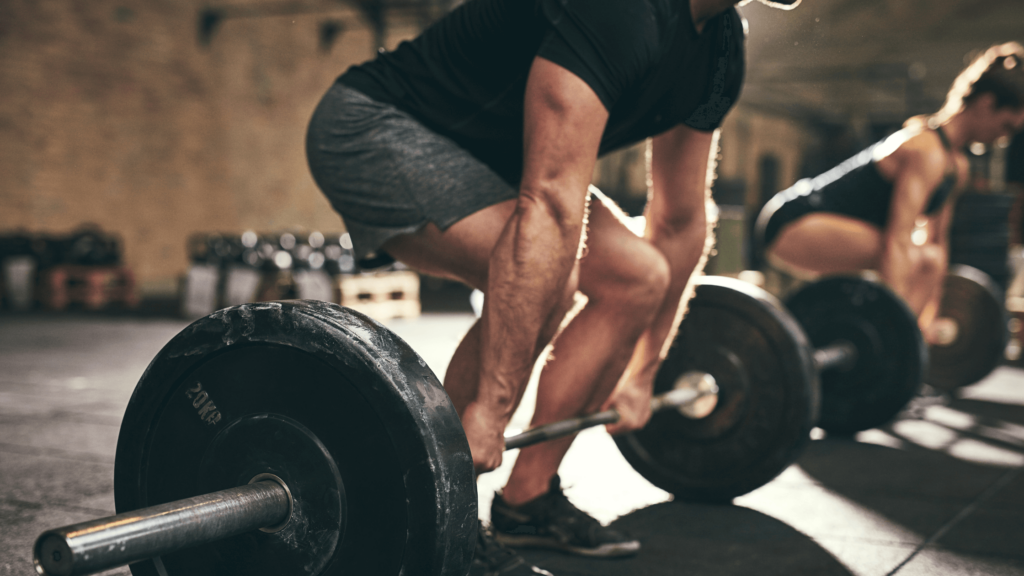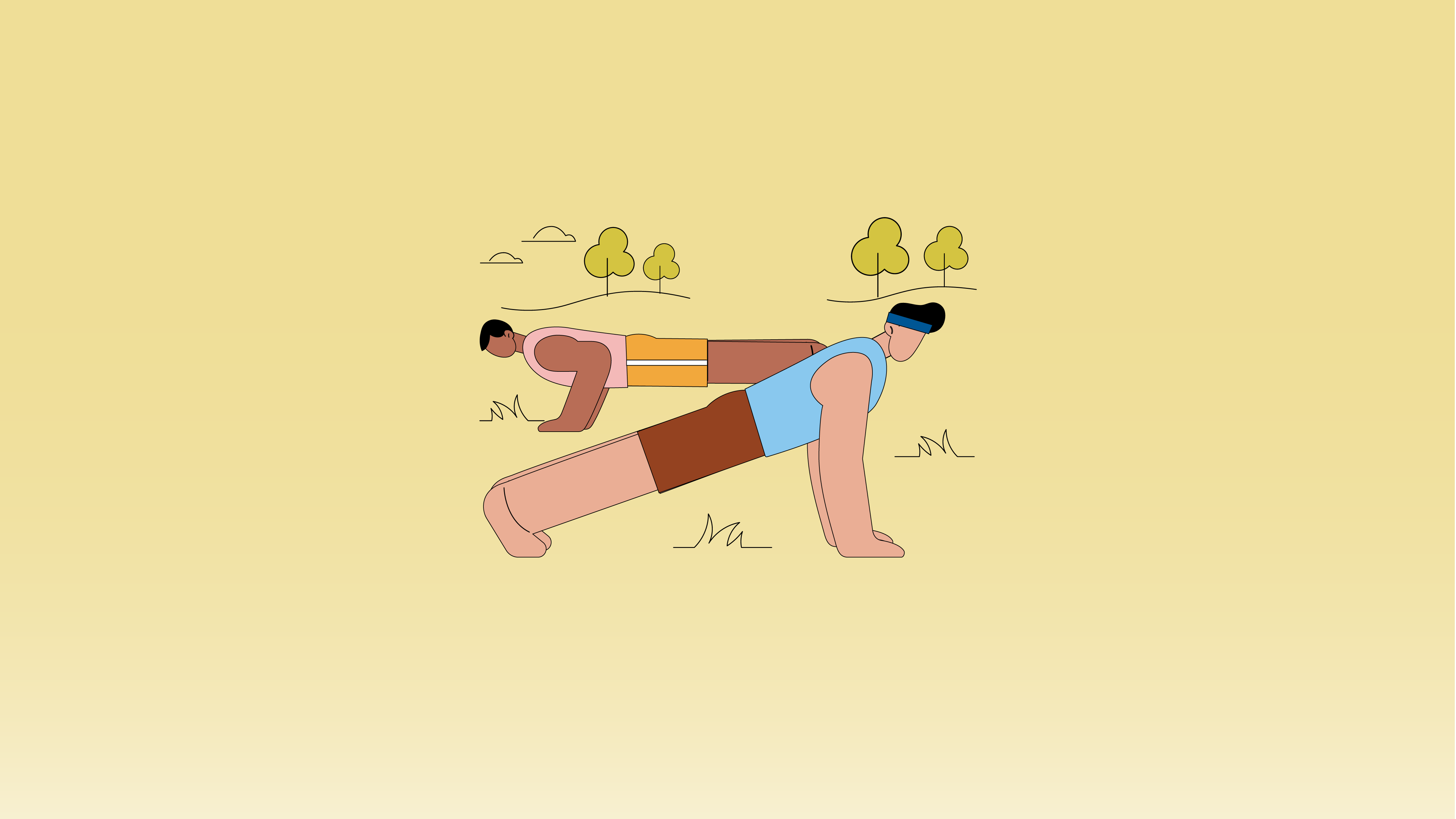For manual laborers, physical work is a daily thing—you’re likely on your feet all day, lifting heavy objects and performing repetitive movements. Strength training is an important part of maintaining physical and mental health for people with active jobs, but functional training—exercises that replicate daily movements—can not only make your job easier but also reduce injury risk and improve heart health.
What is functional training?

Functional training is a category of exercises that are functional in nature—they replicate daily movements. Think about some of the machines you see in the gym. You’ll not often need to push a heavy weight away from your chest while seated. A seated chest row? Not functional. The same goes for most hamstring curls, bench presses, and twisting ab machines. While they target your muscles, they’re not exactly transferable to everyday movements.
Functional training is all about going back to the basics. It focuses on strengthening daily movement patterns—think squats, hinges, lifts, and carries. They target some of the biggest and most used muscle groups that keep you fit and agile. This is an especially important benefit when you work a physically strenuous job.
Common injuries in construction
If you’re not careful, it’s easy to get hurt on the job, but common injuries like cuts and falls aren’t the only risks. Neglecting strength training can lead to muscle imbalances and weakness, which can leave you more susceptible to other injuries.
- Musculoskeletal disorders (MSDs): These injuries mainly affect the soft tissues. Carpal tunnel, lower back strains, rotator cuff injuries, and trigger finger are some of the most common MSDs. Too swift or overly repetitive movements can lead to a musculoskeletal injury.
- Back pain: Back injuries don’t stop at lower back pulls; a lack of functional training can also put your mid- and upper back at risk for pain and injury. Improper lifting techniques are the key culprits for back issues.
- Shoulder injuries: Shoulder injuries are sensitive, often requiring surgery and a lengthy recovery time, even on moderate injuries. Lifting things carelessly or at improper angles can easily lead to a partial or complete tear.
- Knee and ankle injuries: Construction workers often walk and carry heavy things across uneven surfaces. Without proper mobility training, it’s easy for knee and ankle injuries to occur.
- Other muscle strains and tears: Hamstrings, biceps, and Achilles tendon injuries are common. If your body doesn’t have the range of motion and stability to complete a physical task, it’s a surefire way to put yourself at risk of injury.
Why construction workers need strength training
Aside from injury prevention, there are other reasons a construction worker may want to step up their training.
Increased mental energy
On the job, you can only work as well as your attitude allows. By getting regular exercise and working out in a way that makes you feel agile, you’ll experience better mental clarity, focus, and a more positive attitude. These benefits are compounded not only for your team at work but also in your personal life.
Improve heart health
Heart disease has been the leading cause of death in the United States for over 70 years. While several factors contribute to cardiovascular diseases, a lack of physical activity is a big one. Functional training will give you short-term physical benefits and help your heart long-term.
Increased productivity
The easier you can move, the more you can work. If you’re experiencing muscle strain or weakness, it will limit how much you can get done in the day. But if you stick with your training routine, you’ll get things done more efficiently.
Better movement patterns
Functional training will help you develop more natural movement patterns, making moving freely and without pain or discomfort easier. When your body is fit, it will encourage better form and reflexively move more safely.
8 functional exercises to train
Now that you understand what functional training is and why it’s crucial, let’s break down the top functional movements you can work into your daily routine starting today.
1. Deadlifts
Target muscles: Glutes, hamstrings, core, back, and traps
Mastering the deadlift is key to improving your lifting form. You always lift equipment, materials, and supplies, so add these into your routine to start protecting your back.
How to: Stand with your feet shoulder-width apart, spine neutral, core engaged, and shoulders back. Holding a pair of dumbbells (or without weight to focus on form), sit your butt back while maintaining a flat back. Let the dumbbells slide down your shins while bending slightly at the knees (you don’t want to bend too much or lock out). Once the dumbbells reach mid-shin, engage the glutes and let the dumbbells slide up your shins and quads until you reach standing.
2. Squats
Target muscles: Glutes, quads, hamstrings, adductors, hip flexors, and calves
This core functional movement makes getting off chairs, standing from the ground, and shoveling movements easier.
How to: Stand with your knees slightly bent and your feet placed hip-width apart. Sit your butt back as if you were going to sit in a share while maintaining an engaged core. Bend at the knees until you reach parallel (90 degrees with your legs)—ensure your knees continue to track over your toes. Engage the glutes and push through the heels to stand back up.
Pro tip: If you struggle with tight hip flexors, widen your stance and turn your toes out slightly.
3. Overhead press
Target muscles: Front shoulders, triceps, upper pecs, and biceps
This movement will improve your shoulder strength, making overhead lifts easier and more accessible. You likely often lift things over your head on the job, and this type of movement commonly leads to injury.
How to: Start with either dumbbells or a weighted bar, or master the movement using just bodyweight. With your feet about hip-width apart, rack the weights or bar at your shoulders. Engage your core and press the weight overhead—avoid locking at the elbows. Lower the weights back to the starting position with control.
4. Walking lunges
Target muscles: Glutes, hamstrings, quads, and calves
Strengthening the quads and glutes makes walking on any surface easier. Lunges are also great for small climbs, like getting in and out of the work truck or climbing stairs.
How to: Start with your feet about shoulder-width apart, core engaged, and spine neutral. Take a big step forward with your right foot and bend at both knees, driving them towards the ground. Once both knees reach a 90-degree angle (or as far as you can go), drive through the front heel to stand and bring your left foot to your right. Take a step forward with the left foot and repeat.
5. Farmer’s carry
Target muscles: Upper back, lats, traps, grip, forearms, quads, hamstrings, and glutes
Improving your grip strength will help you carry heavy things more easily. This is also a great functional training exercise to protect against musculoskeletal injuries like carpal tunnel syndrome.
How to: Find two heavy objects you can carry (preferably with handles). With your feet about hip-width apart and your core engaged, pick up the weights and stand normally—spine neutral and shoulders back. With a firm grip on the weights or objects, walk normally until you feel like you’re about to lose grip on the weight (or walk a certain distance). Drop, rest for 30 seconds to one minute, and repeat.
6. Bear crawl
Target muscles: Shoulders, chest, back, glutes, quads, hamstrings, and core
This well-rounded, full-body exercise could improve almost any movement on the job. Plus, it’s a great source of cardio to improve heart health.
How to: Get into a tabletop position with your wrists aligned under shoulders, knees under hips, and feet about hip-width apart. Engage through the core as you lift your knees off the ground about 2 inches. Slowly take small movements forward—your right hand and left foot should move first, followed by your left hand and right foot—in a crawling motion. Knees should never touch the ground.
7. Push-ups
Target muscles: Triceps, pectoral muscles, and shoulders
Strong chest and shoulder muscles support all lifting movements. Push-ups are some of the simplest and most effective movements for building shoulder and chest strength, and they’re also great for preventing pectoral injuries.
How to: Start in a high plank position with your hands and wrists directly under your shoulders and your feet hip-width apart. While keeping your elbows tucked into your ribs, bend at the arms and slowly lower your body until your arms reach 90 degrees (or lower if you want more of a challenge). Dig through the heel of the palms and push back up into the starting position.
Pro tip: If you’re struggling with tricep pushups where your arms remain tucked into the sides, widen your arm stance—rather than aligning your wrists under your shoulders, take them further outside of your body.
8. Pull-ups
Target muscles: Lats, traps, rhomboids, and shoulder posterior deltoids
Pulling movements can cause minor or large deltoid tears that are difficult to fully recover from. Pull-ups are some of the most effective exercises for targeting all muscles in the upper body and preventing injury.
How to: For this, you’ll need a pull-up bar. Start in a dead hang—hands can be shoulder-width apart or slightly wider depending on the level of challenge you want, and shoulders should be facing forward. Stick your chest slightly out and engage your core while pulling through the back to lift your chest to the bar. Slowly lower back down with control and repeat.
The main takeaway
Neglecting any form of resistance training, especially functional training, could set the stage for a future injury while on the clock. While regular strength training exercises improve strength and coordination, they don’t offer the same benefits for movement patterns and injury prevention as functional movements.
By incorporating functional training into your workout routine, you improve your strength and daily movement patterns, reduce the risk of injury, improve mental and heart health, increase energy, and boost productivity. These simple movements create an all-around win-win.



2 comments